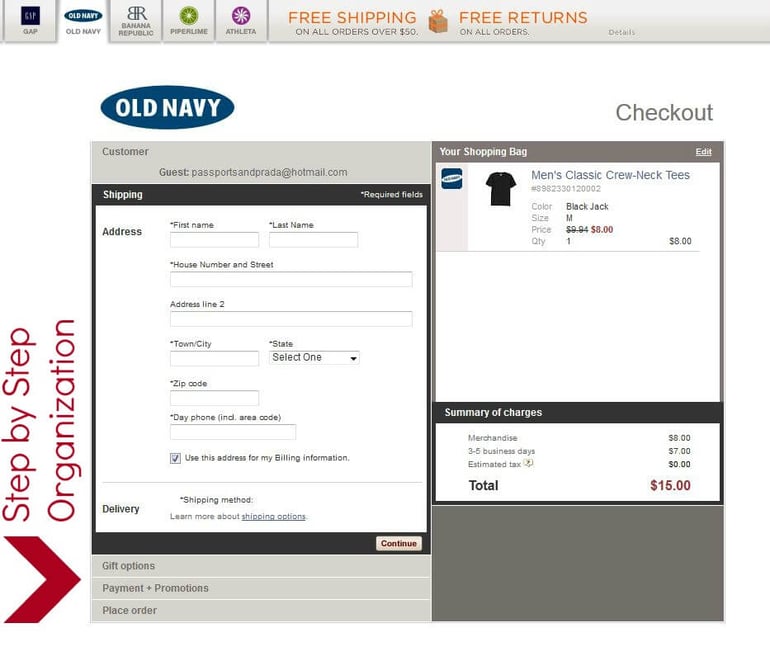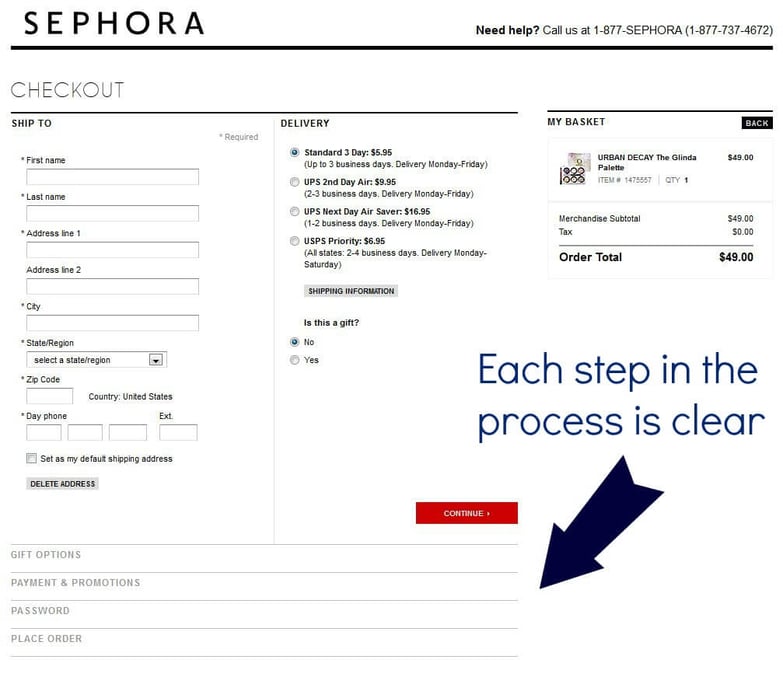By Miva | February 11, 2013

See why top ecommerce brands use Miva’s no-code platform to run
multiple stores, manage massive catalogs, and grow their revenue.

Here at Miva Merchant, we get asked all the time by our clients looking to increase their checkout conversion rate if they should switch to using a one page checkout. Their goal is simple:
They want to convert more shoppers into purchasing customers.
Our response to them is always the same: “Well, It depends.” Now, this is not what most customers expect to hear, but let’s take a step back and really dive into the one page checkout – pros, cons and whether you should consider using it.
There is a very common opinion among ecommerce store owners and merchants that the one page checkout is the holy grail of checkouts which will fix all checkout related abandoned cart issues. It kind of makes sense, right? The less steps the customer has to go though the easier it will be for them to complete an order and your checkout conversion rate will go up.
Well, that is not always the case. The idea of a one page checkout can be appealing but it does not solve all of your problems. In fact, it has its own set of problems to address like page organization and information overload for the customer. A one page checkout may work great for your store, or it could have a negative impact and convert worse than your multi-step checkout.
When we pry a little deeper into our clients’ request for a one page checkout, a lot of times we hear that they read some article or attended some conference where someone told them it was better. Often times these customers have a neglected, cluttered and confusing multi-step checkout process with no clear call to actions and a paragraph of text on how to complete each page. As a side note, if you have to explain what the customer needs to do on each page with a paragraph of text, your existing checkout needs some improvement.

The honest answer to this question is: Both. A one page checkout can be very useful in the right circumstances. Those circumstances depend on the following areas:
For example, if you sell expensive items that average a few hundred dollars with no recognizable brand and an older customer base, then a one page checkout may not work best for you. A multi step checkout that guides the user though the checkout process will probably convert better because of how expensive your items are.
On the flip side, if you sold products where most orders were under $25 and offered free shipping, then a one page checkout could be much more effective.
These are just two simple scenarios, but the only way to truly know for sure would be to test, test, and then test again. The correct way to make this decision would be to setup a parallel one page checkout where you A/B test both checkouts at the same time (because of Miva Merchant’s flexible Page Templates, this is something that can easily be done.) A key thing to note here is you have to make sure you are comparing apples to apples. If you take a brand new optimized one page checkout and compare it to your cluttered multi-step checkout then the results may not be accurate.
We typically recommend that customers first optimize their current checkout as far as they can take it and make sure they are using testing to guide their decisions. Once they have a fully optimized multi-step checkout process, they can then compare it to an optimized one page checkout and be fairly confident that the results they get are accurate.
A multi step checkout has the following benefits:
A one page checkout has the following benefits:
One thing to note with one page checkouts is that almost every big name ecommerce retailer DOES NOT utilize a one page checkout. The industry standard is a clear, concise multi step checkout that guides the user through the process. You may argue that Amazon, the ecommerce leader, does have a one click checkout but even that is not the only way to purchase and can be turned on and off by the customer. Also, Amazon has an incredibly strong brand to back it up, which you may not have.
We think a one page checkout can be a great benefit to your ecommerce store, given the right circumstances. You, as the store owner, know your products and customers best. If you strongly feel having a one page checkout will benefit your customers, then it is worth doing the testing to prove your suspicions are correct (or incorrect). Jumping into a completely new checkout process and user flow is not recommended without the proper testing and data to back it up.
We recommend you first optimize your existing checkout process and create a clear and concise multi-step checkout for your customers BEFORE experimenting with a one page checkout.
No matter which direction you go, your checkout process is a key part of your ecommerce success. You want to make sure you are using testing to make data driven decisions in every step of the process.
Love it? Share it!
No worries, download the PDF version now and enjoy your reading later...
Download PDF Miva
Miva
Miva offers a flexible and adaptable ecommerce platform that evolves with businesses and allows them to drive sales, maximize average order value, cut overhead costs, and increase revenue. Miva has been helping businesses realize their ecommerce potential for over 20 years and empowering retail, wholesale, and direct-to-consumer sellers across all industries to transform their business through ecommerce.
Visit Website